
A Case Study in Design Operations
Create a team mission statement collaboratively with your team. Make sure everybody understands what a mission statement is & abstract the core purpose & value of your team by identifying themes in stories of value about your team.
This article provides a practical, step-by-step guide for creating a mission statement using collaborative activities that lead teams through understanding what a mission is, defining the unique value of the team & capturing that value in a memorable, succinct statement.
"Inaction breeds doubt & fear. Action breeds confidence & courage. If you want to conquer the negative elements in your life, don’t sit at home & think about it. Go out & get busy!" ~ Dale Carnegie
For many UX, design, or DesignOps teams ~ especially those actively attempting to grow or establish their presence, scale their influence, or increase their level of UX maturity ~ a formalized team mission statement can promote internal alignment & external recognition of the team’s focus & value within the larger organization. Even though having a shared mission is generally accepted as valuable, generating a mission statement can feel a little abstract for teams unfamiliar with the process.
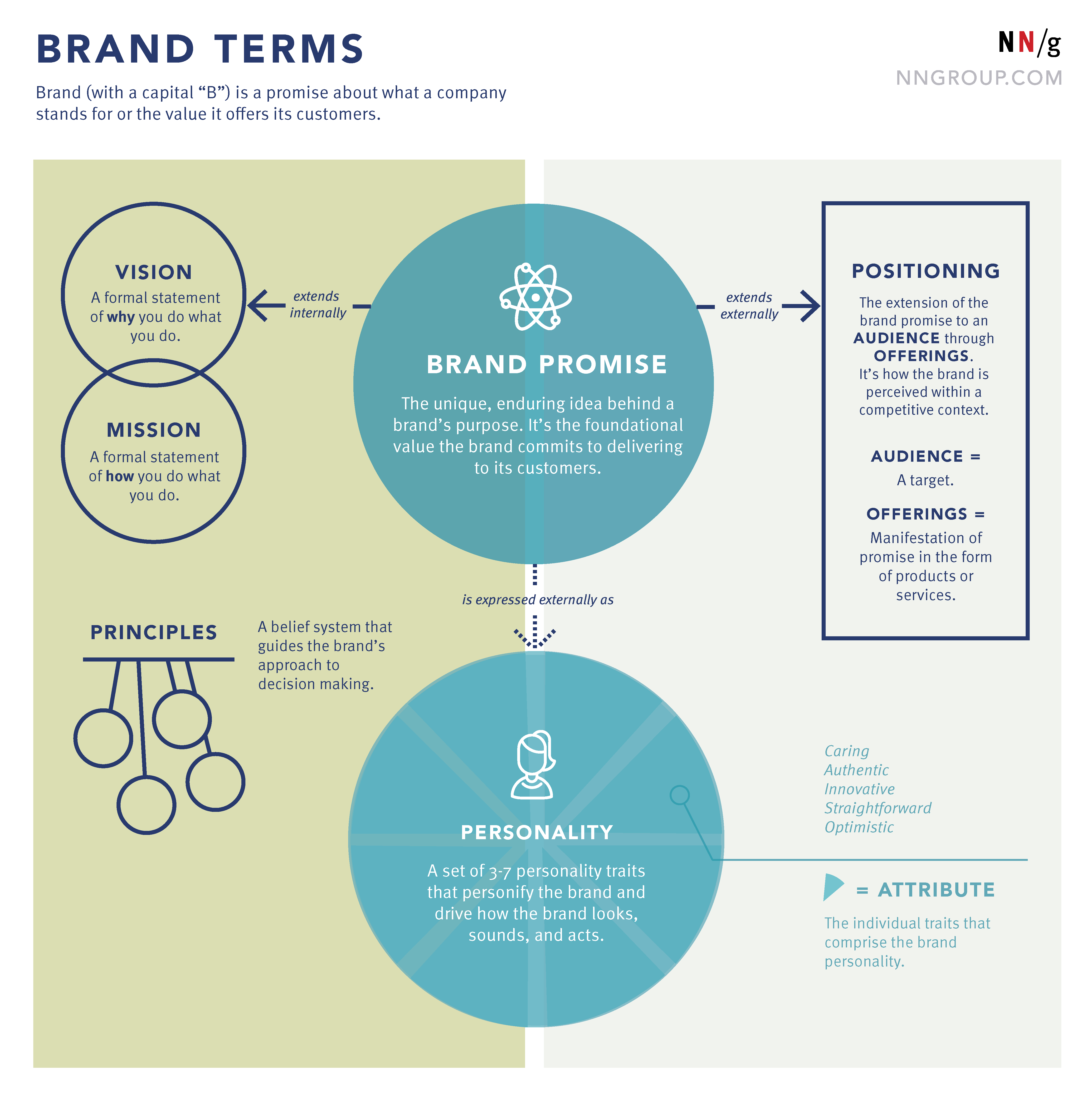
What is a Team Mission Statement?
Definition: A team mission statement is a concise articulation of the core purpose of a team & the value that the team provides to the rest of the organization.
The concepts of a mission statement & a vision statement are often & easily conflated. We’ve previously discussed the difference between mission & vision within the context of an organization’s brand framework ~ & that differentiation is widely maintained for this context:
- A vision statement is an aspirational statement that answers the question:
What do we want to become in n years?
Who do we aim to be in an aspirational yet reasonable amount of time?
- A mission statement answers the question:
What collective value do we generate now?
What do we do as a group that helps realize that aspirational vision?
- A mission statement captures the value that a team currently provides & it should support the vision, strategy, & overall goals of an organization or cause.
In other words, a mission statement captures who we are & how we provide value now; a vision statement captures what we want to become. Both should inform the overall UX or design strategy (the steps for achieving our vision) & be checked against our goals & objectives (metrics or indicators of how well we are achieving that vision).
Generally, vision statements are most useful at levels higher than individual teams. For example, an organization may have a company-wide vision statement or a product-wide vision, to which individual team mission statements align & which they support. However, vision statements can be useful for teams undergoing rapid growth or change or for teams attempting to promote drastic cultural shifts to maintain an aligned & steady momentum.
Writing a team mission statement is a useful activity for any team, especially when:
- The team doesn’t have internal alignment about the value or services it provides to the rest of the organization.
- Individual team members are unsure how to prioritize work requests & projects or are overwhelmed with a variety of types of work & feel a lack of focus.
- The rest of the organization doesn’t understand the value provided by the team or individuals on the team aren’t sure how to express that value to external partners.
- The team is at an inflection point of growth & wants to understand how to strategically add skills & roles.
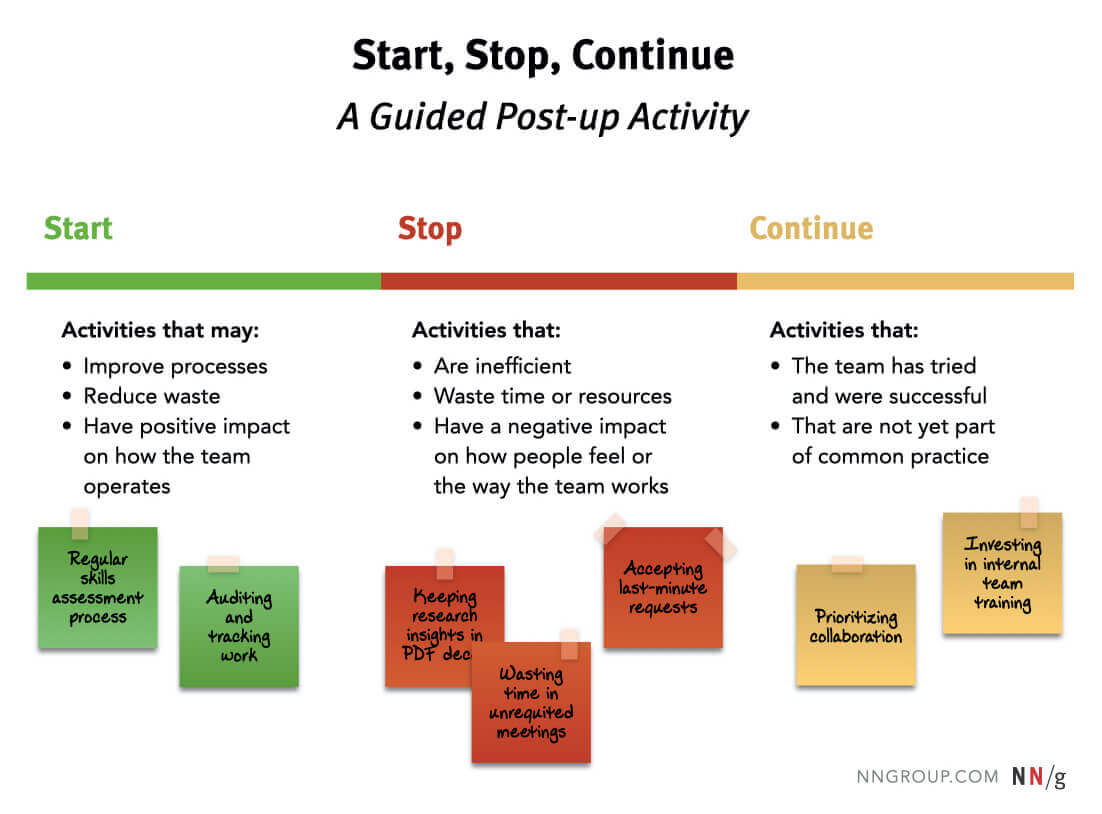
Create a Team Mission Statement
Both vision statements & mission statements should be created collaboratively so that the entire team is rallied around & believes in the final output. The method outlined in this article, then, includes the entire team. Because of the group activities & discussions involved, a strong facilitator is necessary to drive the process. The facilitator can be a member of the team, provided that they can display objectivity in leading discussions & are trusted by other team members.
Don’t assume everyone is familiar with mission statements, even if the team is on board with creating one. As previously discussed, this concept is often misunderstood. Before jumping into the activity, align everybody on the definition & value of team mission statements. You can start by sharing example mission statements from other teams to help everyone envision the desired outcome of the activity as clearly as possible.
“Pardon him, Theodotus: he is a barbarian, & thinks that the customs of his tribe & island are the laws of nature.” ~ George Bernard Shaw
If there are current challenges that led the team to this process, allow team members to express them & capture them in one place. One widely utilized, simple activity that can generate discussion is Start, Stop, Continue. In this activity, team members individually brainstorm things the team should stop doing on red sticky notes, things the team should start doing on green sticky notes, & things to continue doing on yellow sticky notes. You can follow this individual brainstorming step with a group postup, an affinity-diagramming exercise to cluster items into themes, & even a dot-voting exercise to understand which items are most important to the team.
Start, Stop, Continue is a widely utilized brainstorming method to identify & discuss potential new beneficial activities or adjustments to existing activities & processes.
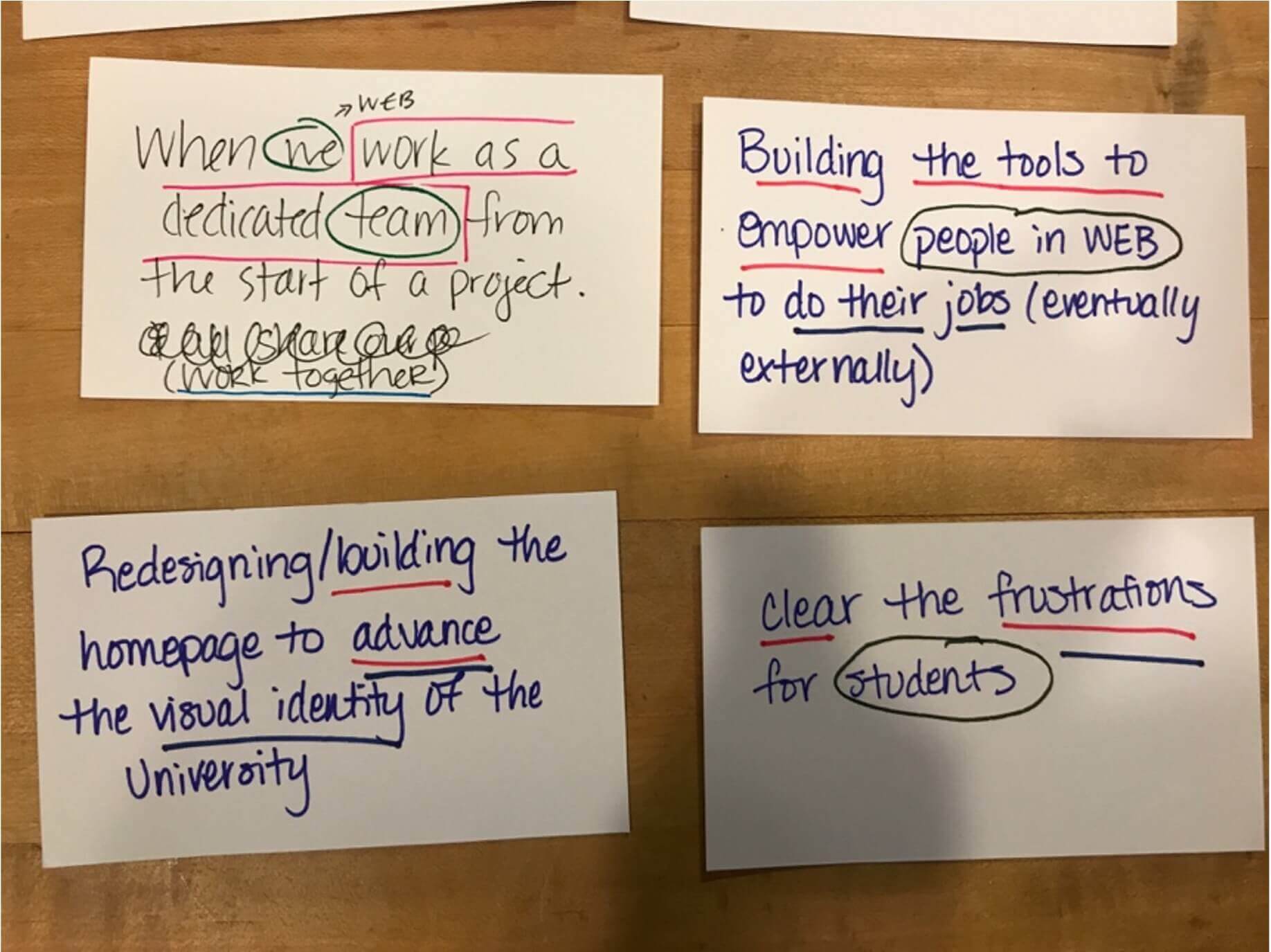
Share Stories of Value
Grounded with a shared understanding of mission statements & having built alignment around activities on which the team wants to focus, the next step is to create & share stories of value. A story of value is a clear yet concise narrative that describes specific incidents when the team felt its value was realized.
To generate stories of value, provide the following brainstorming prompt to the group: What does it look like when we deliver our full value? Small groups then break out to discuss & brainstorm responses. The responses can be real stories from the past or hypothetical stories if the group is nascent enough to not have a rich history yet. (The slight reframing of the prompt in this case would be: What would it look like when we deliver our full value?)
The more specific the responses, the better. It can help to provide some examples of responses. For example:
- A potential story of value for a UX team: Last month, we held a research-engagement workshop with engineering & saw recommendations that met real user needs included in the next sprint.
- A potential story of value for a DesignOps team: We conducted a survey to understand where our designers face roadblocks & were able to use the results to obtain a company-wide license for UserZoom to better support them.
In order to converge, small groups share their generated stories of value back to the larger group at the end of the brainstorming activity.
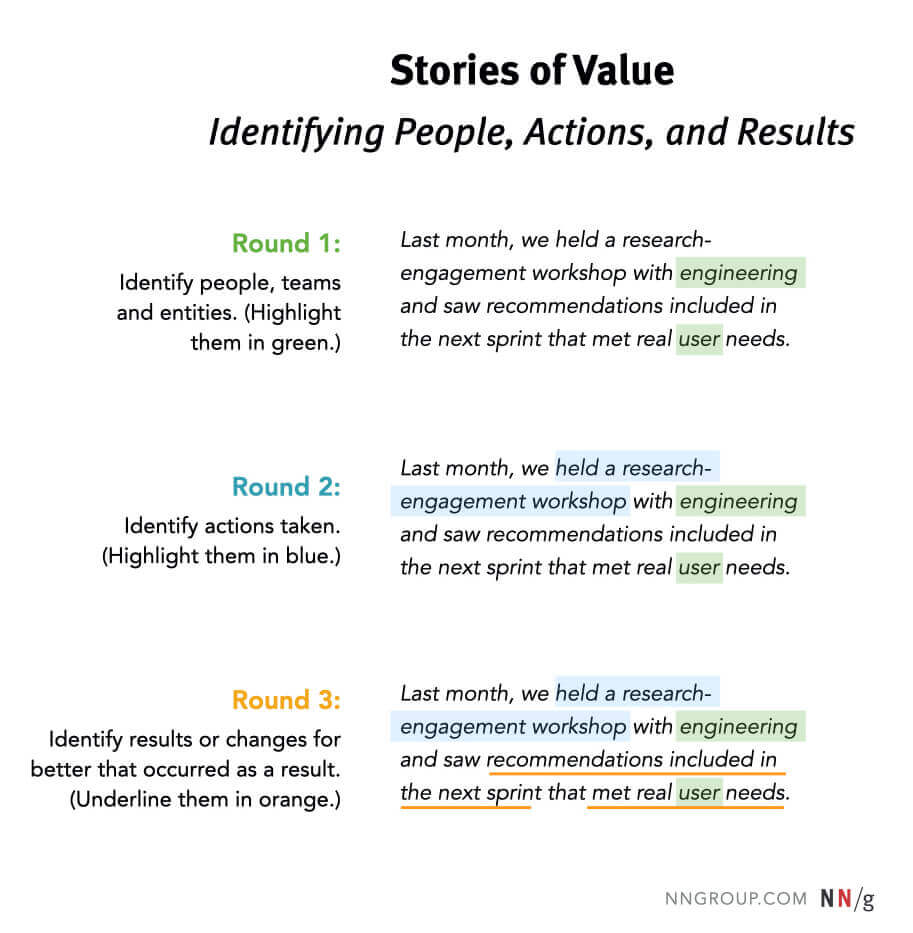
Identify Critical Elements in the Stories of Value
After larger-group sharing, the group goes back to their smaller teams to identify critical elements within the stories of value they’ve captured. Instruct the teams to reread their individual stories & look for 3 components within the narratives:
- People or groups the team supported (These could be users, clients, or internal teams)
- Actions they took & activities they did to provide that support
- Changes & results that happened because of their actions
This is best done in 3 separate rounds (one for each component type), using different methods of marking the identified components (e.g, highlighting, circling, underlining) for each round.
For a practical example, consider the example story of value: Last month, we held a research-engagement workshop with engineering & saw recommendations included in the next sprint that met real user needs. 3 rounds would identify the following critical elements within this narrative:
- People or groups: engineering, users
- Actions & activities: Held a research-engagement workshop
- Results: Saw recommendations included in the next sprint, met real user needs
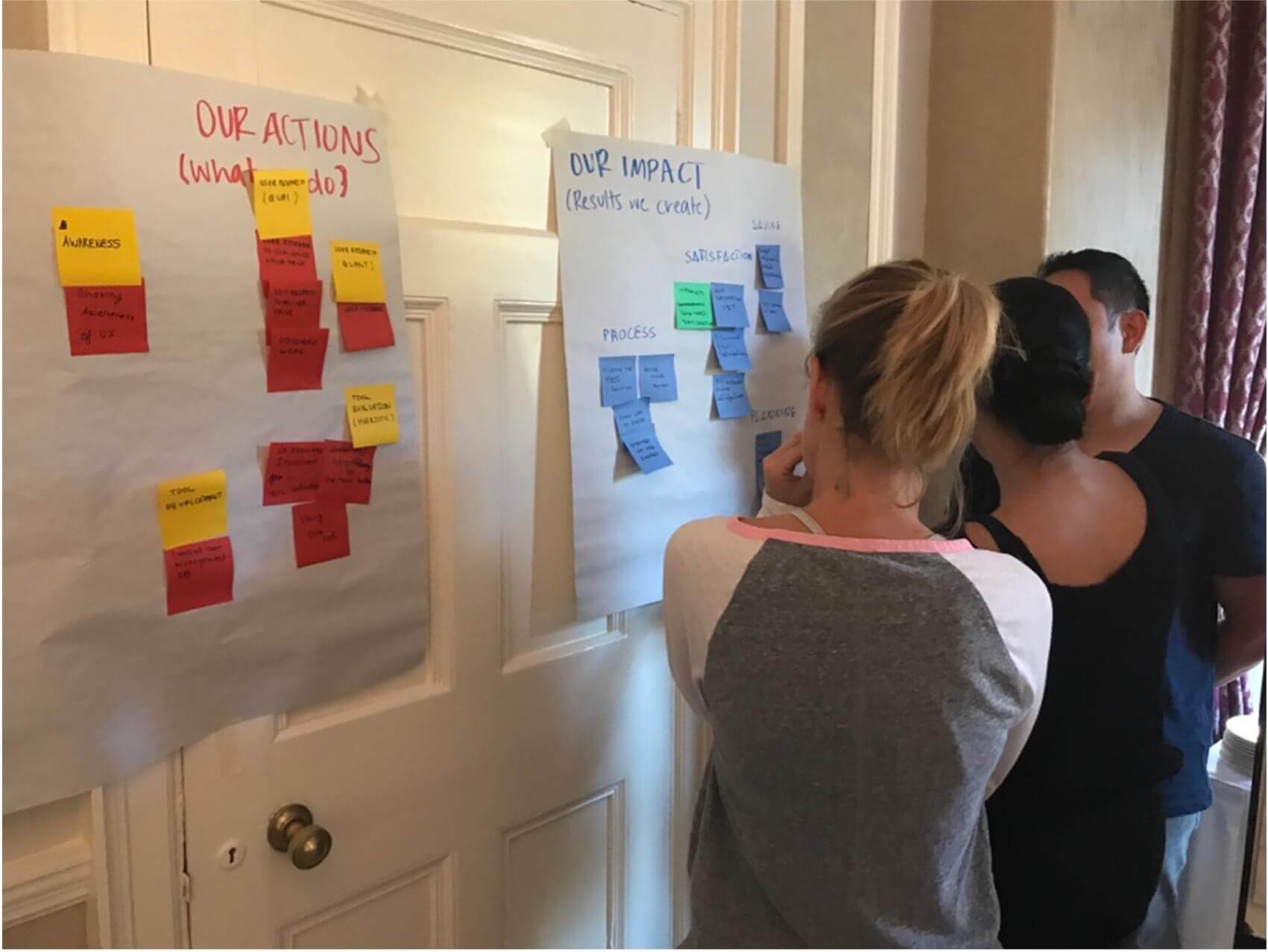
Cluster the Identified Critical Elements
Finally, these identified elements can be abstracted. They are essentially the potential building blocks for creating a team mission statement. Teams pull out the identified words & phrases & house them on 3 separate boards (one per group/round). A nice approach is to break the team into 3 groups; each group has ownership over their respective category, creates the compiled board, & identifies & shares themes back to the larger group.
Create Draft Mission Statements
After larger-group discussion of the themes within the 3 categories of critical elements, individuals generate potential mission statements. Set a time limit & allow individuals to create as many draft mission statements as they can or desire to within that timeframe. The team then shares individual mission statements & discusses the strengths & patterns among them.
After the individual draft mission statements are shared, the group can continue to refine the candidate mission statements into a single, formalized mission statement. One option is to nominate a lead (perhaps the facilitator) to work with the strengths & themes discussed & come up with some options for the team to vote on.
When writing a final mission statement, keep these guidelines in mind:
- Be concise: Between 10-15 words is ideal.
- Keep it simple: Avoid overly verbose language.
- Be specific: It should not apply to any other team or organization.
- Say it out loud: Does it sound awkward? (Revise it.) Memorable? (Not Bad.) Like a human would say it in a normal conversation? (Pretty Good.)
After the mission statement is formalized, don’t keep it locked away like a secret treasure. Use it as an everyday tool to:
- Prioritize UX-team initiatives: Use the statement as a flag in the sand to prioritize competing initiatives & as a tool to discuss what the team can take on or which types of work best align to the fulfillment of the team mission.
- Market the UX-team’s value: The final, formalized statement acts as a shared language & common, standardized “elevator pitch” for explaining the UX team’s value to the rest of the organization. With this tool, external partners, users, & leadership will hear a consistent message.
- Strategically grow the UX team: Likewise, the statement & aligned actions will describe the team to new team members & ensure that the addition of new skills & roles aligns to the overall purpose of the team.
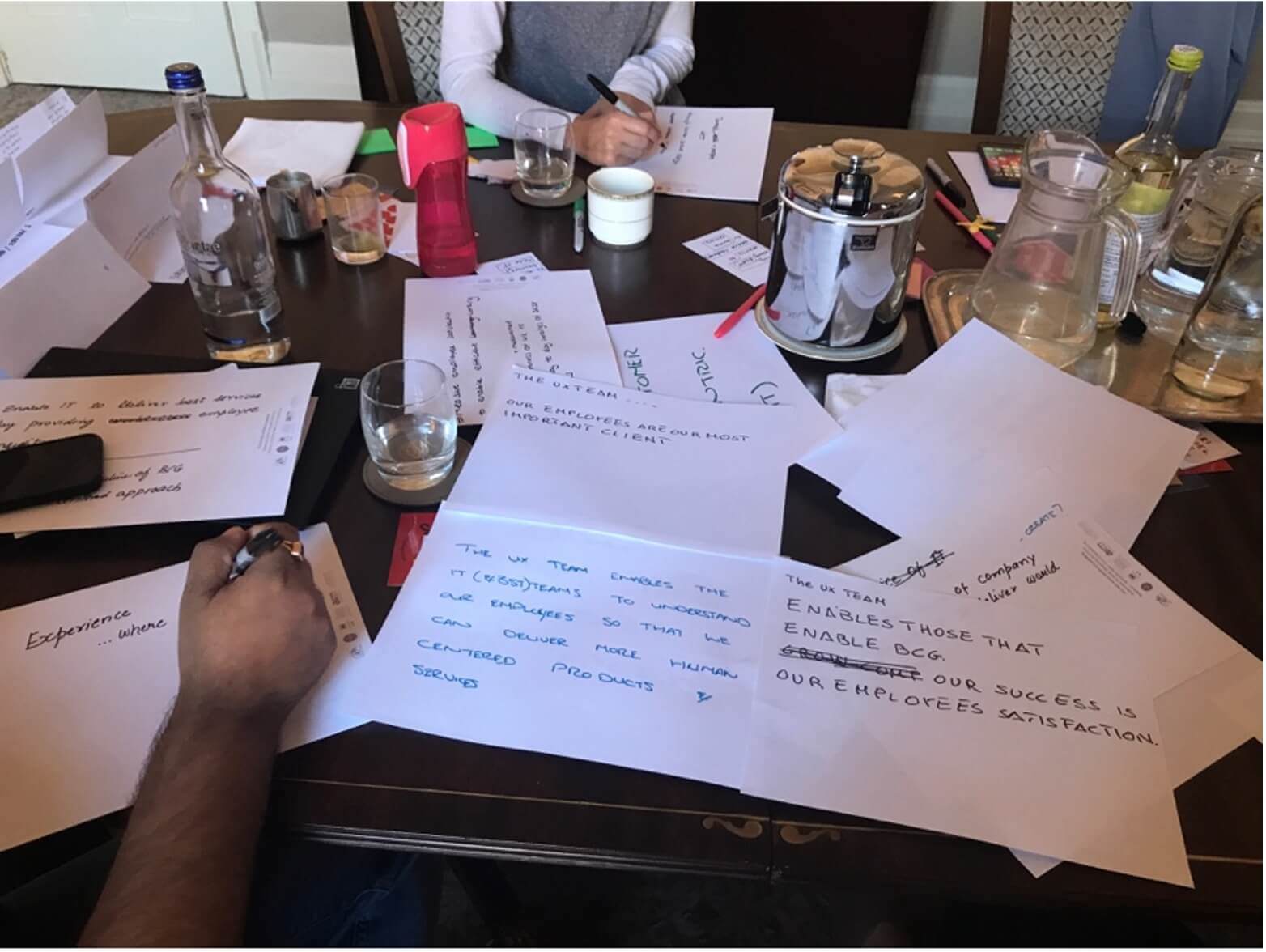
Sample UX Team Mission Statements
For fun, here are a few public current or past mission statements for UX, design, or DesignOps teams:
AirBnB
Provide agility to the whole product organization through centralized tools, systems & services that enhance speed & quality of execution. (Source: https://airbnb.design/designops-airbnb/)
Salesforce
Make work awesome, & make awesome work. (Source: https://medium.com/salesforce-ux/scaling-the-designops-summit-10e805bbdf2b)
Home Depot
Help drive developer efficiency & UI consistency. (Source: https://www.invisionapp.com/inside-design/scaling-design-teams-att-hd/)
“Grief turns out to be a place none of us know until we reach it. We anticipate (we know) that someone close to us could die, but we do not look beyond the few days or weeks that immediately follow such an imagined death. We misconstrue the nature of even those few days or weeks. We might expect if the death is sudden to feel shock. We do not expect this shock to be obliterative, dislocating to both body & mind. We might expect that we will be prostrate, inconsolable, crazy with loss. We do not expect to be literally crazy, cool customers who believe that their husband is about to return & need his shoes. In the version of grief we imagine, the model will be 'healing.' A certain forward movement will prevail. The worst days will be the earliest days. We imagine that the moment to most severely test us will be the funeral, after which this hypothetical healing will take place. When we anticipate the funeral we wonder about failing to 'get through it,' rise to the occasion, exhibit the 'strength' that invariably gets mentioned as the correct response to death. We anticipate needing to steel ourselves for the moment: will I be able to greet people, will I be able to leave the scene, will I be able even to get dressed that day? We have no way of knowing that this will not be the issue. We have no way of knowing that the funeral itself will be anodyne, a kind of narcotic regression in which we are wrapped in the care of others & the gravity & meaning of the occasion. Nor can we know ahead of the fact (& here lies the heart of the difference between grief as we imagine it & grief as it is) the unending absence that follows, the void, the very opposite of meaning, the relentless succession of moments during which we will confront the experience of meaninglessness itself.” ~ Curated Excerpt From: Joan Didion. “The Year of Magical Thinking.” Apple Books.
Curated via Nielsen Norman Group. Thanks for reading, cheers! (with a glass of wine & book of course)
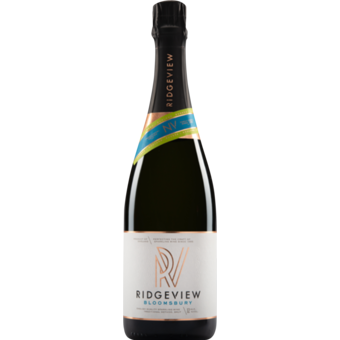
Ridgeview Brut Bloomsbury
Producer: Ridgeview Wine Estate, Ditchling Commons, Hassocks, United Kingdom
"Our signature blend Bloomsbury is light golden in colour with a fine, persistent mousse. Citrus fruit aromas with hints of melon and honey. Chardonnay dominance brings finesse, along with crisp freshness. The Pinots add depth and character leading to a beautifully balanced finish. Will age gracefully over time as the Chardonnay matures." ~ Ridgeview Winery
"A hint of nettle plays amidst the green apple and lemon notes of the nose. The palate has very fine fizz that gently exudes even more green-apple and bright lemon notes. This is slender, taut and lively, and makes an ideal apéritif style delivering real, lasting and resounding refreshment." ~ 92 Points ~ Wine Enthusiast
"The Bloomsbury was disgorged in November 2019. This is the signature cuvée from Ridgeview, and it was served to the Queen at her official Diamond Jubilee celebration. It is always a reliable performer, bursting with citrus lemon, lime, freshly sliced melon and honeysuckle. The energetic palate revives the senses, thanks to a vibrant line of acidity that imparts almost a steeliness toward the finish (not unlike a Blanc de Blancs.) This is great introduction to the delights of Ridgeview and indeed to English sparkling wine." ~ 91 Points ~ Neal Martin ~ Vinous Media
"Chardonnay dominates this blend with pinot noir and meunier, providing a richer wine than Ridgeview’s Cavendish, big and leesy, with fleshiness to its fruit. The autolysis lends a toasty pastry-crust note while the savory chardonnay spice brings to mind fennel seeds and meaty stock. It’s substantial enough for braised rabbit or hare." ~ 90 Points ~ Wine & Spirits

The Year of Magical Thinking
From Didion's husband, the writer John Gregory Dunne, died of a heart attack, just after they had returned from the hospital where their only child, Quintana, was lying in a coma. This book is a memoir of Dunne's death, Quintana's illness, and Didion's efforts to make sense of a time when nothing made sense. "She's a pretty cool customer," one hospital worker says of her, and, certainly, coolness was always part of the addictive appeal of Didion's writing. The other part was the dark side of cool, the hyper-nervous awareness of the tendency of things to go bad. In 2004, Didion had her own disasters to deal with, and she did not, she feels, deal with them coolly, or even sanely. This book is about getting a grip and getting on; it's also a tribute to an extraordinary marriage.
Many will greet this taut, clear-eyed memoir of grief as a long-awaited return to the terrain of Didion's venerated, increasingly rare personal essays. The author of Slouching Towards Bethlehem and 11 other works chronicles the year following the death of her husband, fellow writer John Gregory Dunne, from a massive heart attack on December 30, 2003, while the couple's only daughter, Quintana, lay unconscious in a nearby hospital suffering from pneumonia and septic shock. Dunne and Didion had lived and worked side by side for nearly 40 years, and Dunne's death propelled Didion into a state she calls "magical thinking." "We might expect that we will be prostrate, inconsolable, crazy with loss," she writes. "We do not expect to be literally crazy, cool customers who believe that their husband is about to return and need his shoes." Didion's mourning follows a traditional arc—she describes just how precisely it cleaves to the medical descriptions of grief—but her elegant rendition of its stages leads to hard-won insight, particularly into the aftereffects of marriage. "Marriage is not only time: it is also, paradoxically, the denial of time. For forty years I saw myself through John's eyes. I did not age." In a sense, all of Didion's fiction, with its themes of loss and bereavement, served as preparation for the writing of this memoir, and there is occasionally a curious hint of repetition, despite the immediacy and intimacy of the subject matter. Still, this is an indispensable addition to Didion's body of work and a lyrical, disciplined entry in the annals of mourning literature.

